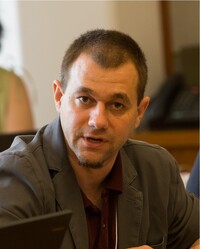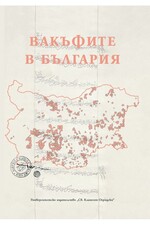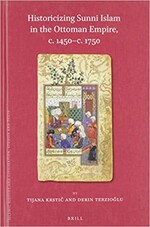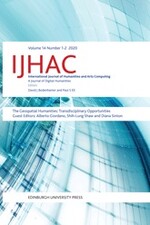
Brief Biography
Grigor Boykov holds a PhD in Ottoman history, granted by Bilkent University (Ankara) in 2013. Prior to joining the ÖAW he taught at the University of Sofia (2014-2019), Central European University in Budapest (2015-2016), and was a research fellow at the Netherlands Institute in Turkey (2012-2014). Boykov held a junior fellowship at the Research Center for Anatolian Civilizations (2007-2008), Andrew W. Mellon fellowship at the American Research Institute in Turkey (2010), and the Advanced Academia Program Fellowship of the Center for Advanced Study in Sofia (2014-2015). He has been a team member of the projects ERC-CoG-2014 OTTOCONFESSION (2015-2016) and ERC-StG-2015 UrbanOccupationsOETR (2017-2019) and also co-initiated several digital initiatives among which the Digital Archive and Library of the Zograf monastery and a Historical Gazetteer of Ottoman Bulgaria. In 2019, he received MSCA-IF, under EC Horizon 2020 Widening Programme, for his project Population Geography of Bulgaria, 1500- 1920: An Historical Spatial Analysis (POPGEO_BG), carried out at Koç University in Istanbul.
Research Interests
Period: 15th to 19th centuries
Area: Ottoman Empire, Southeast Europe, Eastern Balkans, Bulgaria
Topics: Ottoman population history, population geography, spatial history, urban history, Ottoman architectural history, monastic history in the Ottoman Empire
Selected Publications
- Social Networking in South-Eastern Europe: 15th-19th Century (co-edited with Maria Baramova and Ivan Parvev) (Münster: LIT, 2021)
- “Abdāl-affiliated Convents and ‘Sunnitizing’ Halveti Dervishes in Ottoman Rumeli (Tenth/Sixteenth Century)” in Tijana Krstić and Derin Terzioğlu (eds.) Historicizing Sunnism in the Ottoman Empire, c. 1450-c. 1700 (Leiden: Brill, 2020)
- “Bridging the Gap between Pre-census and Census-era Historical Data: Devising a Geo-sampling Model to Analyse Agricultural Production in the Long Run for Southeast Europe, 1840–1897”, International Journal of Humanities and Arts Computing 14:1-2 (2020): 46-63 (co-authored with M. E. Kabadayi and P. Gerrits)
- “The Collection of Ottoman Documents in the Archive of the Monastery of Zograf: Preliminary Notes on its Condition, Contents, Significance, and Avenues for Further Research.” in Dimitar Peev (ed.) Zographou Sympraktika (Sofia: Nasledstvo na Zografskata sveta obitel, 2019), 318-349.
- Cities in South Eastern Thrace: Continuity and Transformation (co-edited with Ivaylo Lozanov and Daniela Stoyanova) (Sofia: University of Sofia Press, 2017).
- “The T-shaped Zaviye/İmarets of Edirne: A Key Mechanism for Ottoman Urban Morphological Transformation.” Journal of the Ottoman and Turkish Studies Association 3:1 (2016): 29–48.
- “Human Cost of Warfare: Population Loss during the Ottoman Conquest and the Demographic History of Bulgaria in the Late Middle Ages and Early Modern Era.” in Oliver Jens Schmitt (ed.) The Ottoman Conquest of the Balkans: Interpretations and Research Debates (Vienna: Österreichische Akademie der Wissenschaften, 2016), 103-166.


